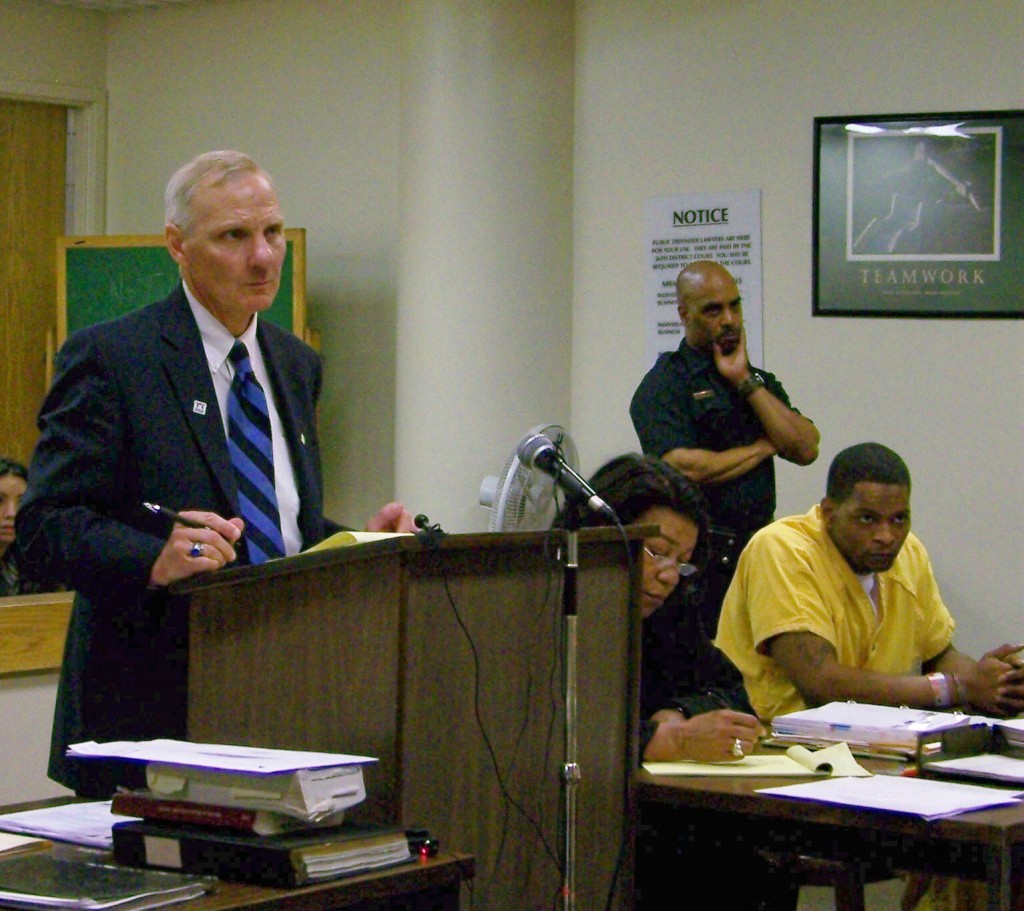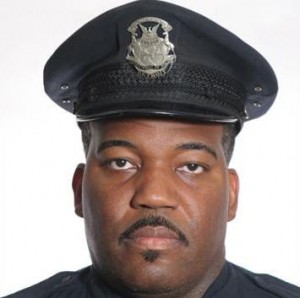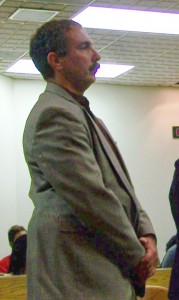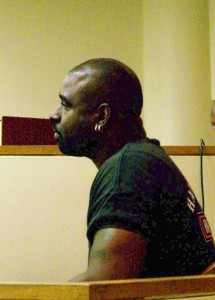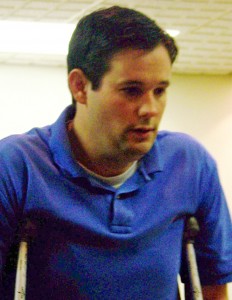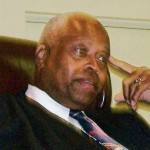Case against Jason Gibson continues despite contradictory evidence, allegations that shoot-out took place at cop drug house
By Diane Bukowski
DETROIT – Wayne County Circuit Court Judge Cynthia Gray Hathaway ruled Nov. 12 that police witnesses and evidence from two previous cases against Jason Alexander Gibson can be presented in his trial for the alleged murder of Detroit police officer Brian Huff . The trial is scheduled for Feb. 28, 2011.
Gibson faces 18 felony counts related to Huff’s death and the wounding of three other cops during a shoot-out May 3 at 20263 Schoenherr, just south of E. Eight Mile.
A neighborhood resident and a high-ranking former law enforcement official, who requested not to be identified for their protection, have alleged it was generally known that the duplex was a drug house run by Detroit police.
Despite this outstanding issue, Wayne County Prosecutor Kym Worthy and Assistant Prosecutor Thomas Trczinski are proceeding full speed ahead with the case against Gibson. They allege that he alone killed Huff, wounded three other officers, and somehow survived a shoot-out with numerous cops, sustaining only a gunshot wound to the leg.
Hathaway said evidence from Gibson’s previous cases is “relevant” to the current charges.
“It shows a lack of fear on the part of the defendant to interact with police officers in a confronting type of way,” Hathaway said. “I will permit the evidence to be introduced. It shows a lack of mistake on the part of the defendant in knowing who he’s dealing with, his familiarity with police officers.”
Hathaway thus upheld a highly controversial legal maneuver used by Trczinski, involving Michigan Rules of Evidence (MRE) 404b motions. She said she will issue special jury instructions at Gibson’s trial regarding the earlier cases to avoid prejudicing the jury.
Gibson’s defense attorney Susan Reed objected that the cases were not relevant because they show Gibson does not attack police when approached by them, but instead flees.
Gibson has not even been tried on charges in the most recent case, involving three counts of weapons possession in November, 2009. That case is currently before Hathaway.
Gibson earlier pled guilty to “attempted disarming of a peace officer” and “attempted possession of a controlled substance less than 25 grams,” related to a November, 2007 arrest. Wayne County Circuit Court Judge David Groner sentenced him to a term of three years probation in that case.
A media frenzy erupted when Gibson was charged with Huff’s death. It was directed both at Hathaway, who initially released him on a $20,000 bond in the 2009 case, according to computer court records, and at Groner for sentencing him to probation in 2007.
Michigan Rule of Evidence 404b says, “Evidence of other crimes, wrongs, or acts is not admissible to prove the character of a person in order to show action in conformity therewith. It may, however, be admissible for other purposes, such as proof of motive, opportunity, intent, preparation, scheme, plan, or system in doing an act, knowledge, identity, or absence of mistake or accident when the same is material, whether such other crimes, wrongs, or acts are contemporaneous with, or prior or subsequent to the conduct at issue in the case.”
Federal Rule of Evidence 404b uses identical language.
Trczinski contended that Gibson’s previous cases showed intent, motive, “the actus reus of resisting and obstructing,” and his “identity as a shooter.” He cited a legal precedent from a case in which a defendant was acquitted to justify using evidence from Gibson’s 2009 case, which has not yet been adjudicated.
“These were actions in similar fashion with similar motive and intent,” Trczinski said.
But Reed contended, “Both incidents show that when the defendant is confronted by police, he flees, he runs. To say they show his intent to kill is irresponsible. The prosecutor talks about motive, but then doesn’t give what the motive is. . . .The court can determine that these cases are not relevant and don’t come under 404b.”
Trczinski appeared to be attempting to shore up the prosecution’s case against Gibson. A preliminary examination June 7 produced contradictory and at times virtually unbelievable testimony from police officers and other witnesses. (See articles by this author published in the Michigan Citizen at http://michigancitizen.com/man-charged-in-death-of-officer-brian-huff-p8593-1.htm and http://michigancitizen.com/answers-sought-in-cops-death-p8708-1.htm.)
During Huff’s preliminary exam, officers including Huff’s partner testified that they responded to a “breaking and entering, shots fired” call at the Schoenherr address. Despite the danger presented by such a situation, they said Huff, a 12-year police veteran, entered the front door of the house with his gun holstered, while his partner Joseph D’Angelo left him to go to the rear of the location.
Huff was shot to death upon entry, according to testimony.
All other officers who arrived after Huff and D’Angelo said they approached the house with their guns drawn.
Neighbor Paul Jameson testified he heard “three thumps” in the rear of the duplex, not gunshots. Jameson also said he saw TWO flashlights probing the inside of the house, before he got his gun (he has a concealed weapons permit) and went to the backyard of the Schoenherr address in an attempt to protect that property. A neighbor on the opposite side told the Michigan Citizen later that he heard the first shots only after a phalanx of police cars arrived and cordoned off the block.

Huff's partner said he saw no gun by Gibson, but other officers claimed they found gun a foot from his head
D’Angelo, who said he first apprehended Gibson in back of the duplex, testified that he did not see a gun near him after he handcuffed him to a fence. But officers Ernie Harris and Christopher Champaign, who arrived later, testified they found a 45 mm. Ruger 290 handgun with its serial number shaved off lying on the ground “a foot” from Gibson’s head. An evidence technician said the gun had Gibson’s palm print on it.
On Nov. 12, Trczinski gave a somewhat revised version of the May 3 events.
He said officers responded to “a breaking and entering in progress, with the possibility of shots fired.” He said further, “The civilian [Jameson] went and got his firearm to protect his own home, and was in a position to see the officers arrive.”
Long-time criminal defense and appeals attorney Deborah Choly agreed with Reed’s assessment regarding Gibson’s earlier cases.
“Attempting to disarm a police officer and shooting someone in the head are really different m.o’s,” she said. “But 404b motions, which have only been raised relatively recently, are usually almost always granted.”
U.S. Third Circuit Court Justices ruled in US v Morena, decided Nov. 19, 2008, “Admission of bad acts evidence must be carefully scrutinized because “[a]lthough the government will hardly admit it, the reasons proffered to admit prior-bad-act evidence may often be a Potemkin, because the motive, we suspect, is often mixed between an urge to show some other consequential fact as well as to impugn the defendant’s character.”
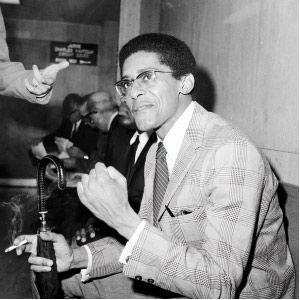
Kenneth Cockrel Sr. fought for Black representation on juries in 1960's; since abolition of Recorders' Court in 1999, most Wayne County juries are a majority white and suburban
MRE 403 additionally says, “Although relevant, evidence may be excluded if its probative value is substantially outweighed by the danger of unfair prejudice, confusion of the issues, or misleading the jury, or by consideration of undue delay, waste of time, or needless presentation of cumulative evidence.”
Hathaway said in her ruling that the probative value of Gibson’s earlier cases outweighed the danger of prejudice. But Choly said, “You can’t unring a bell once it’s been rung.”
Regarding the use of evidence from unadjudicated cases, defense attorney John Royal said, “This type of evidence can only be used when the alleged acts of uncharged evidence are being used to prove some specific fact that is relevant to the case, other than the propensity to engage in criminal behavior. But usually when prosecutors try to use this type of evidence, they are really using it to show propensity, and therefore the evidence should not be admitted.”

